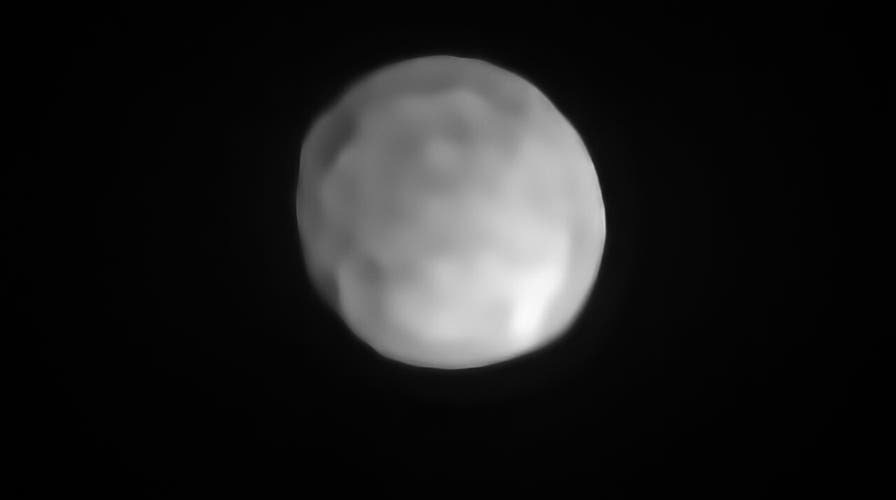Fox News Flash top headlines for Oct. 29
Fox News Flash top headlines for Oct. 29 are here. Check out what's clicking on Foxnews.com
As the debate rages on whether Pluto, currently a dwarf planet, should be given back its planet status, it may soon be joined by an asteroid that could wind up being the smallest dwarf planet in the solar system.
Asteroid Hygiea, the fourth largest space rock in the Asteroid Belt, was observed for the first time by astronomers in high-resolution. It's spherical in shape and may wind up taking the crown for the smallest dwarf from Ceres, also located in the Asteroid Belt.
“Thanks to the unique capability of the SPHERE instrument on the [Very Large Telescope], which is one of the most powerful imaging systems in the world, we could resolve Hygiea’s shape, which turns out to be nearly spherical,” said the study's lead author, Pierre Vernazza, in a statement. “Thanks to these images, Hygiea may be reclassified as a dwarf planet, so far the smallest in the Solar System.”

A new SPHERE/VLT image of Hygiea, which could be the Solar System’s smallest dwarf planet yet. As an object in the main asteroid belt, Hygiea satisfies right away three of the four requirements to be classified as a dwarf planet: it orbits around the Sun, it is not a moon and, unlike a planet, it has not cleared the neighborhood around its orbit. The final requirement is that it has enough mass that its own gravity pulls it into a roughly spherical shape. This is what VLT observations have now revealed about Hygiea. (Credit: ESO/P. Vernazza et al./MISTRAL algorithm (ONERA/CNRS)
PLUTO SHOULD BE A PLANET AGAIN, RESEARCHERS ARGUE
"By comparing Hygiea’s sphericity with that of other Solar System objects, it appears that Hygiea is nearly as spherical as Ceres, opening up the possibility for this object to be reclassified as a dwarf planet," the study's abstract states.
In addition to the spherical requirement for dwarf planet status, Hygiea already orbits the Sun, is not a moon, and has "not cleared the neighborhood around its orbit," the ESO added in its statement.
The research has been published in the scientific journal Nature Astronomy.
Though Hygiea may eventually be given dwarf planet status, it's significantly smaller than Pluto or Ceres, with a diameter of just 267 miles. Pluto's diameter is approximately 1,490 miles, while Ceres' diameter is approximately 590 miles.
Following the discovery, the International Astronomical Union will eventually vote to determine whether Hygiea can be given dwarf planet status or if it will remain an asteroid.
NASA TO EXPLORE JUPITER'S MOON EUROPA, WHICH MAY HOLD LIFE
Earlier this month, NASA Administrator Jim Bridenstine said at the International Astronautical Congress that Pluto should be given back its planet status. “I am here to tell you, as the NASA Administrator, I believe Pluto should be a planet,” he said to applause during a wide-ranging speech.
CLICK HERE TO GET THE FOX NEWS APP
Fox News' James Rogers contributed to this story.





















